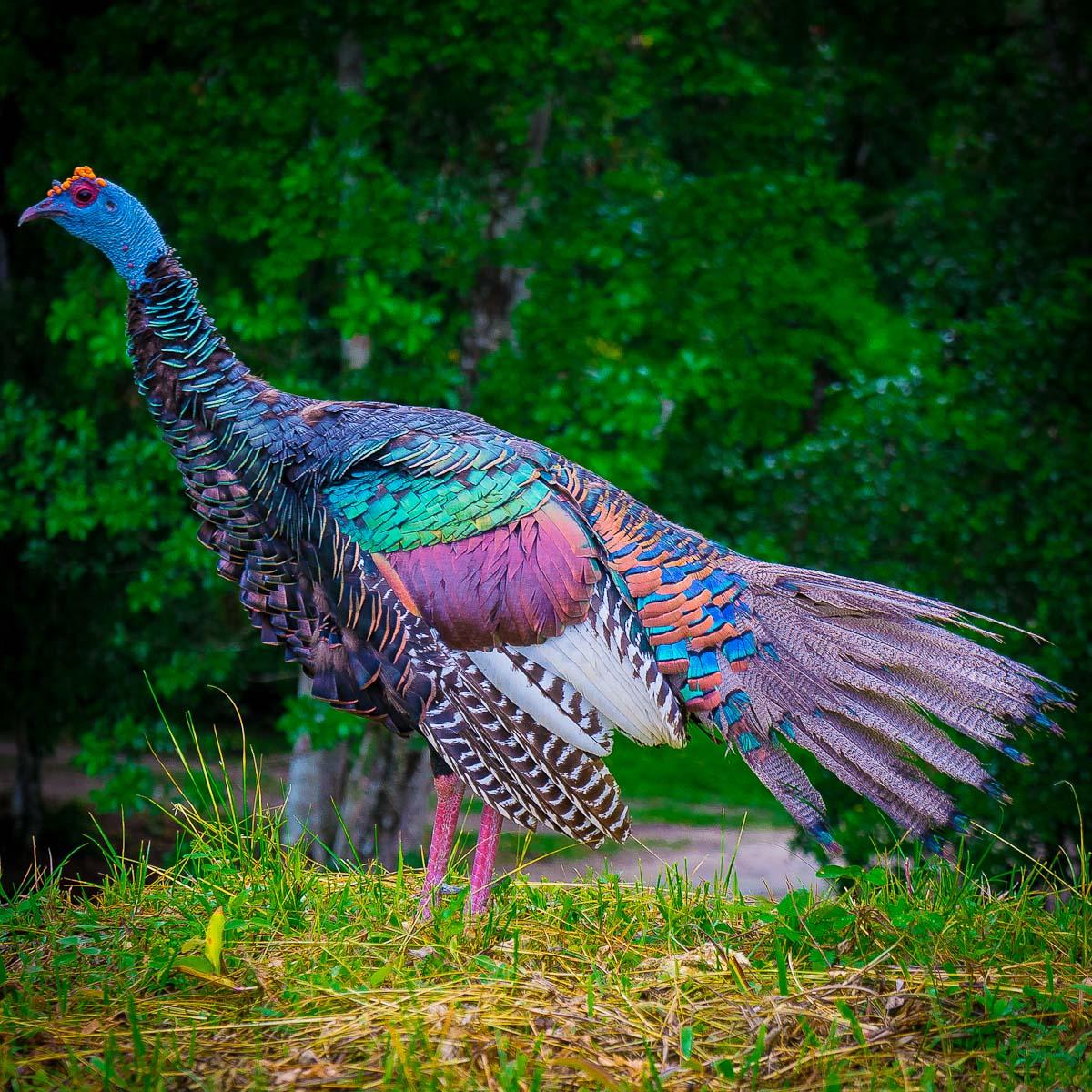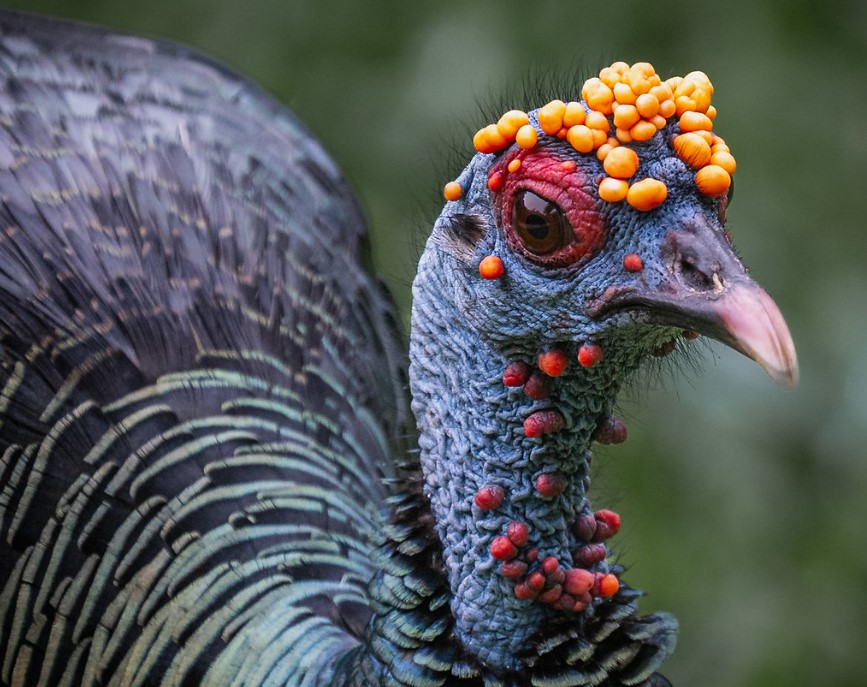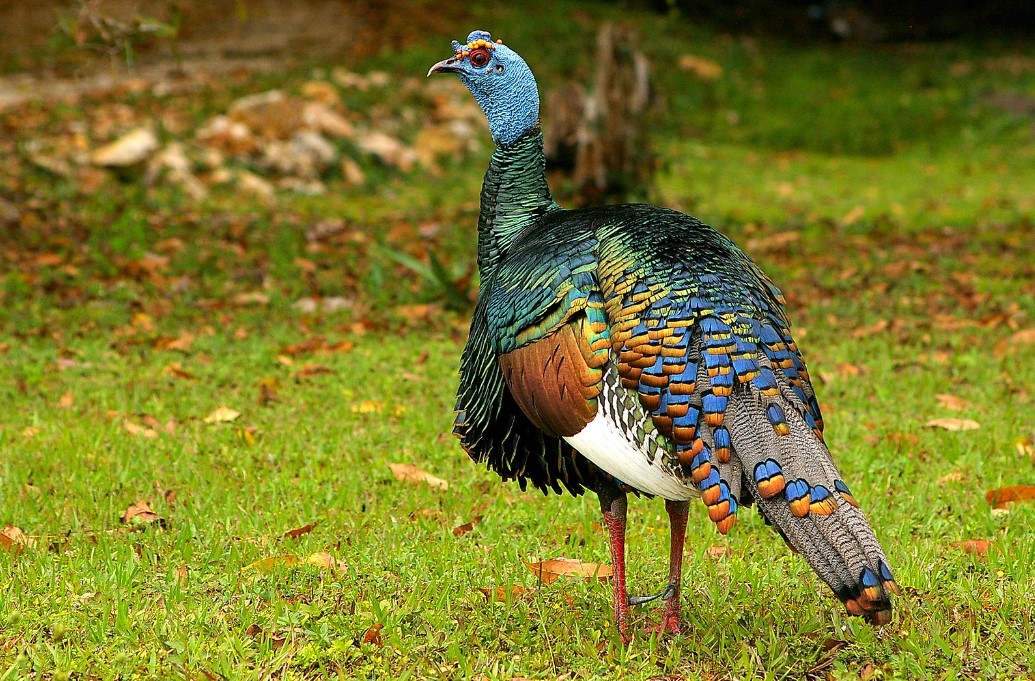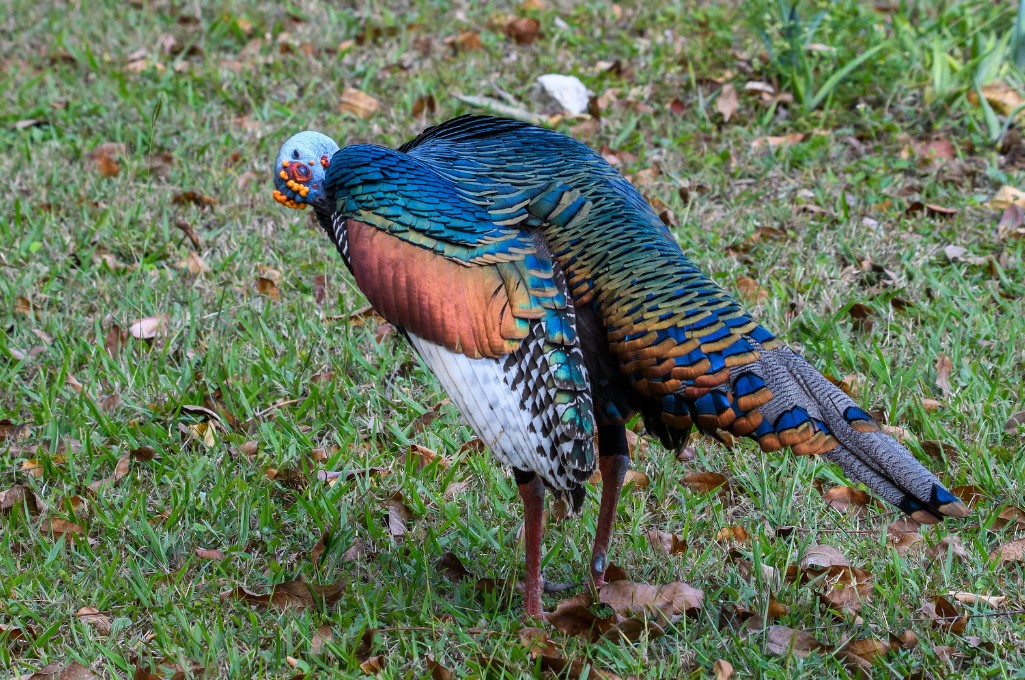The Ocellated Turkey (*Meleagris ocellata*) is a strikingly colorful bird native to the Yucatán Peninsula in Mexico, Belize, and northern Guatemala. Unlike its more widely known relative, the North American wild turkey, the Ocellated Turkey is smaller, with a more vivid appearance. Its feathers are a stunning iridescent mix of green, bronze, and blue, giving it a shimmering effect in the sunlight. The name “ocellated” refers to the eye-like spots (ocelli) on the tail feathers, which are surrounded by blue and copper, adding to its unique beauty. The bird’s head and neck are blue with orange-red nodules, giving it a distinctive, almost reptilian appearance.

Ocellated Turkeys are elusive and often found in dense tropical forests, making them difficult to spot in the wild. They are ground-dwelling birds, known for their incredible agility despite their size. During mating season, males engage in a spectacular display to attract females, fanning their tails and producing unique vocalizations. Their calls, which include a mix of drumming and gobbling sounds, are unlike those of other turkeys and can carry over long distances. Males also sport spurs on their legs, which they use during fights with rivals.






Due to habitat destruction and hunting, the Ocellated Turkey is classified as Near Threatened. Local communities in its range have traditionally hunted the bird for food, but increased efforts toward conservation aim to protect its population. Ecotourism and wildlife reserves play a key role in safeguarding this species, allowing people to admire its beauty while raising awareness of the need for conservation.